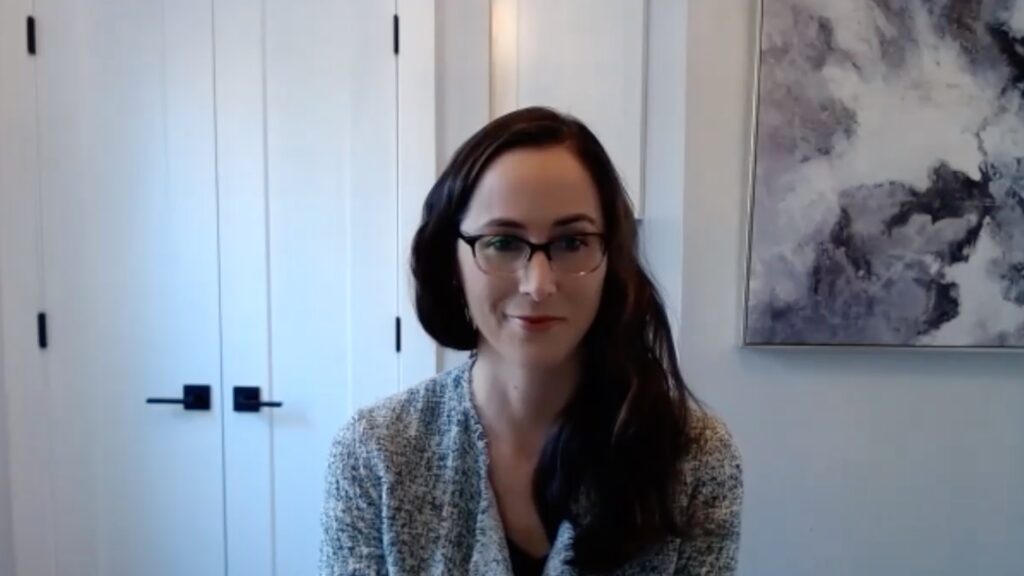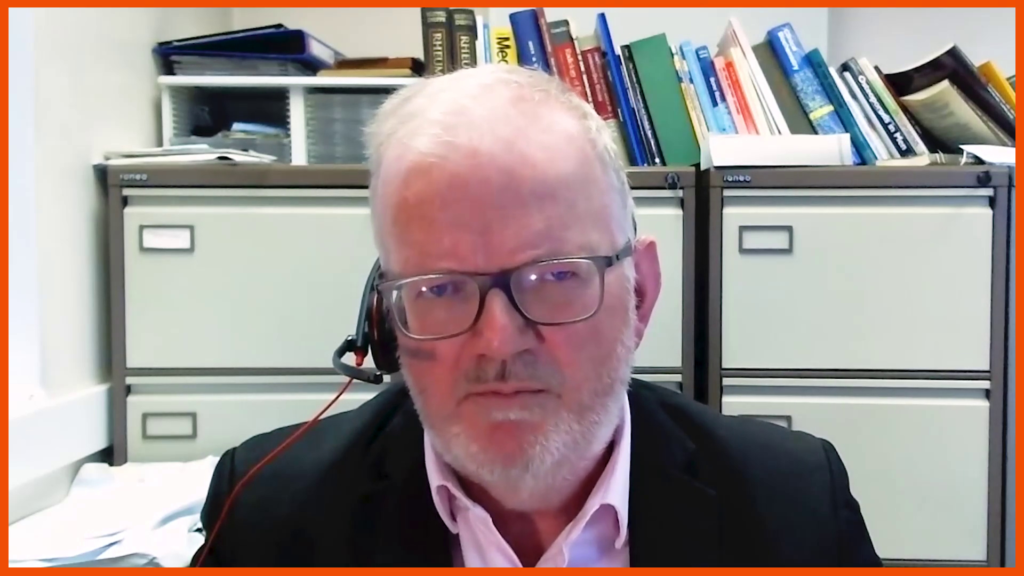Osteoporosis is a major health issue, affecting around 200 million women worldwide. Although osteoporosis is typically associated with women, it is also diagnosed in men; one in three women over age 50 will experience osteoporotic fractures, as will one in five men aged over 50.1,2 In Europe, osteoporosis accounts for a greater disability burden than cancer (with the exception of lung cancer).3 In addition, its incidence is increasing; a study predicted that annual fractures and costs will rise by almost 50% from 2005 to 2025.2 The treatment of osteoporosis is also challenging, with 50–70% of the patients discontinuing their osteoporosis medications within the first year of initiation.4 There is, therefore, an urgent need for improved management of osteoporosis and its consequences.
Osteoporosis was a hot topic at the Annual Meeting of the Endocrine Society (ENDO 2019), which was held on 23–26 March 2019 in New Orleans, Louisiana. The Endocrine Society released guidelines for the pharmacologic management of osteoporosis in postmenopausal women, which highlighted the need for earlier, more widespread screening and treatment.5 The guidelines were based on clinical evidence and patient values and preferences; the key changes can be summarised as follows:
- Anabolic treatments, teriparitide (ForteoÒ, Eli Lilly, Indianapolis, Indiana, USA) or abaloparatide (TymlosÒ, Radius Health, Waltham, Massachusetts, USA), are recommended as first-line therapy for patients with very severe osteoporosis, multiple fractures, and/or very low bone density.
- For other patients, bisphosphonates and denosumab are still advised as first-line therapies.
- For patients at low or moderate risk of fracture, a ‘drug holiday’ from bisphosphonate is recommended after 5 years since these drugs have a long half-life.
Other key points were that patients should be advised to obtain sufficient calcium and vitamin D from their diet, and only rely on supplements when dietary intake is not possible. Patients also need to understand that, while increasing exercise and improving diet may slow the rate of bone loss, only approved medications are able to build bone.5
Several experts commented on the challenge of making patients feel comfortable taking treatment over the long term, particularly with regard to the risk of side effects of treatment, including osteonecrosis of the jaw or atypical femoral fracture. They stressed the need to highlight the harms of not receiving treatment, and also to consider patient preference; many women prefer a single intravenous dose of denosumab. In addition, a predictable schedule, such as once-weekly, seems to be associated with better compliance. A biomarker check of procollagen type IN propeptide (PINP) is useful to check for adherence.6
A key point, which was raised in a number of presentations, was the importance of responding to the risk of fracture and begin treating high-risk women at perimenopause rather than waiting for a diagnosis of osteoporosis.5–7 Accumulating evidence suggests that the onset of bone loss occurs during late perimenopause.8 Monitoring of bone mineral density (BMD) for high-risk patients with low BMD should take place every 1–3 years, according to the new guidelines.5 Professor Mone Zaidi of the Icahn School of Medicine at Mount Sinai in New York City, commented: “Recent evidence suggests that a woman loses bone most rapidly in the early years of menopause when she is osteopenic, primarily. Osteopenia also causes a loss of bone that predisposes the woman to fractures and if you look at the general population, there are more fractures in women who have osteopenia not because there’s a greater risk of fracture but because there are simply more women considered in the osteopenic range, yet fracture with the same kind of frequency. So, the idea is to treat active bone loss during perimenopause and not wait until the bone is already lost.”6
Another session at ENDO 2019 examined the efficacy of current approaches for assessment of fracture risk, including fracture risk assessment tool (FRAX) and dual-energy x-ray absorptiometry (DXA). In her presentation, Dr Joy Tsai of Harvard Medical School and Massachusetts General Hospital, stressed that the majority of fractures occur in women with osteopenia, not osteoporosis. The DXA scan only provides a two-dimensional image but bone density is affected by a number of parameters including osteoarthritis and bone thickness. Furthermore, the DXA scan does not fully capture changes in bone architecture which could distinguish between osteopenia and osteoporosis.7,9 In addition, the FRAX score is not a reliable assessment of fracture risk in a number of high-risk groups, including type 2 diabetes, obesity, sarcopenia and those taking high-dose glucocorticoid therapy.7,9,10
In another presentation in this session, Dr Kenton R Kaufman, of the Mayo Clinic in Rochester, Minnesota, addressed common misconceptions about the prevalence of falls. The majority of falls occur during the middle of the day and in the summer, most likely because these are the people are most active at these times.7,9 A recent systematic review and meta-analysis found that, while exercise can reduce the risk of falls and injurious falls, it did not significantly decrease the risk of hospitalisation and mortality.11 Dr Kaufman recommends interventional training involving postural perturbations, which pushes patients to the limits of their ability so that the ability to stay upright becomes an automatic response.12
A major talking point among attendees at ENDO 2019 was the recent approval of romosozumab (EvenityTM, Amgen, Thousand Oaks, California, USA), a humanised monoclonal antibody against sclerostin, which is the first in its class for the treatment of osteoporosis. In the phase III FRAME study, romosozumab reduced the risk of new vertebral fractures in postmenopausal women by 73% at 12 months.13 These findings were confirmed in the phase III ARCH study, which involved women at high risk for fracture.14 Romosozumab offers potential advantages over the other anabolic treatments, teriparatide and abaloparatide, since it does not increase osteosarcoma risk. It is administered as a monthly subcutaneous injection rather than self-administered daily subcutaneous injection, which some patients may prefer. One potential safety concern is a possible increased risk of cardiovascular (CV) adverse events; the approval includes a boxed warning stating that it may increase risks for myocardial infarction, stroke and CV death and should not be taken by patients who experienced a CV event within the previous year.15
With the baby-boomer population now reaching postmenopausal ages, the risk and cost of osteoporosis is becoming an important health issue. Many challenges remain to be addressed: the need for earlier screening, communicating to patients the importance of therapeutic adherence, improving tools for assessment of fracture risks and reducing the risk of falls. The introduction of romosozumab is a welcome addition to the treatment armamentarium, particularly in women at high risk of fracture. Finally, the overarching message of ENDO 2019 was that the sooner that treatment for osteoporosis is initiated, the better.
References
- IOP, Osteoporosis facts and statistics. Available at: www.iofbonehealth.org/facts-statistics (accessed 30 April 2019).
- Burge R, Dawson-Hughes B, Solomon DH, et al. Incidence and economic burden of osteoporosis-related fractures in the United States, 2005-2025. J Bone Miner Res. 2007;22:465–75.
- Johnell O, Kanis JA. An estimate of the worldwide prevalence and disability associated with osteoporotic fractures. Osteoporos Int. 2006;17:1726–33.
- Jaleel A, Saag KG, Danila MI. Improving drug adherence in osteoporosis: an update on more recent studies. Ther Adv Musculoskelet Dis. 2018;10:141–9.
- Eastell R, Rosen CJ, Black DM, et al. Pharmacological management of osteoporosis in postmenopausal women: An Endocrine Society Clinical Practice guideline. J Clin Endocrinol Metab. 2019;104:1595–622.
- Treating Osteoporosis Must Simultaneously Address Patient Fears, Needs. 2019. Available at: www.endocrineweb.com/professional/meetings/treating-osteoporosis-must-simultaneously-address-patient-fears-needs (accessed 1 May 2019).
- Bone Density Assessment Tools Fall Short in Supporting Fracture Prevention. 2019. Available at: www.endocrineweb.com/professional/meetings/bone-density-assessment-tools-fall-short-supporting-fracture-prevention (accessed 1 May 2019).
- Zaidi M, Turner CH, Canalis E, et al. Bone loss or lost bone: rationale and recommendations for the diagnosis and treatment of early postmenopausal bone loss. Curr Osteoporos Rep. 2009;7:118–26.
- Tsai JN, Kaufman KR, Ebeling PR. Fracture Risk Assessment Beyond BMD and FRAX. Presented at ENDO 2018, 22–26 March 2019, in New Orleans, Louisiana, USA.
- Poiana C, Capatina C. Fracture risk assessment in patients with diabetes mellitus. J Clin Densitom. 2017;20:432–43.
- de Souto Barreto P, Rolland Y, Vellas B, Maltais M. Association of long-term exercise training with risk of falls, fractures, hospitalizations, and mortality in older adults: a systematic review and meta-analysis. JAMA Intern Med. 2018; doi: 10.1001/jamainternmed.2018.5406 [Epub ahead of print].
- Kaufman KR, Wyatt MP, Sessoms PH, Grabiner MD. Task-specific fall prevention training is effective for warfighters with transtibial amputations. Clin Orthop Relat Res. 2014;472:3076–84.
- Cosman F, Crittenden DB, Adachi JD, et al. Romosozumab treatment in postmenopausal women with osteoporosis. N Engl J Med. 2016;375:1532–43.
- Saag KG, Petersen J, Brandi ML, et al. Romosozumab or alendronate for fracture prevention in women with osteoporosis. N Engl J Med. 2017;377:1417–27.
- FDA, Evenity; Highlights of prescribing information. Available at: https://www.accessdata.fda.gov/drugsatfda_docs/label/2019/761062s000lbl.pdf (accessed 1 May 2019).









